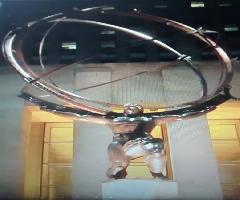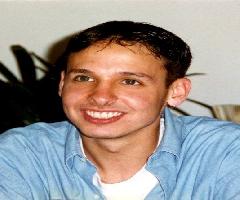Hip replacement surgery has been an effective method of relieving debilitating hip pain and bringing back mobility since the 1960’s. Recovery, in the typical sense, usually requires on average about two to four months to complete. But unbeknownst to many considering the augmentation is a more recent method that more quickly returns people pain free to their feet and back to a mobility they once knew.
With rehabilitation beginning the day of the surgery, says orthopedic surgeon Corey Burak of Hudson Valley Bone and Joint Surgeons, “I have patients driving three days later, back to work within two weeks and doing
things as they feel comfortable doing them.” Pioneered in the mid 1990’s by Dr. Joel Matta in California, the anterior approach to hip replacement also reduces both the probability of the surgeons inaccurately placing the implants and the later possibility of a dislocation.A specially designed operating table called the HANA enables easier access to the joint – thus generally reducing the incision from about 12 inches to three or four. In turn, factors such as patient weight, muscle definition and severity of the condition can mostly be ignored and opens the operation to just about all comers, says Dr. Burak.
In practice, the anterior or frontal approach helps preserve the natural anatomy of the region, and since the minimally invasive entrance is made in between the muscles, he says, “You’re leaving the rest of the stuff around the hip undisturbed.” Out of that, the procedure lives up to its billing of a less painful and speedier recovery, while the higher probability of an accurate placement ensures that one leg won’t end up shorter than the other.
The use of a special x-ray device known as the fluoroscope allows the surgeon to see exactly where the implants are going. “We’re actually getting real time imaging while we’re doing surgery,” he says. In simple terms, it means any inaccuracies can be adjusted on the fly rather than requiring another surgery to make sure patients are on balance.
As is, his proficiency with this procedure has caused his practice to shift away from the more common elderly patient found in orthopedics’ offices to a majority that lies between 40 and
60 years of age and live very active lives. They have found themselves on his doorstep, and on the outside of their athletics, because they’ve been hit with something like arthritis or the excess use over the years has finally slowed them down. Tennis, skiing, cycling, he says, There’s no limit to getting them back to where they once were and what’s normal for their age range.Of course, coming across the anterior approach and Dr. Burak isn’t arrived at as conventionally as other procedures. Not necessarily in the fluent medical vocabulary of your family doctor, patients usually become familiar with this procedure through internet research. “They’ll look to see who does it and the end of the tunnel always leads to me,” says the Phelps Memorial Hospital surgeon.
Trained under Dr. Andy Yun in California, Dr. Burak completed about 150 replacements in his care over a one year period. Since moving back east in 2006, and as the first surgeon to offer the procedure in the northeast, he has completed another 350 cases.
Still, at this point, about only 200 surgeons nationwide have the necessary qualifications, and his closest competition in Manhattan, has just 20 or 30 replacements to his credit. Despite the lack of public – and even professional – knowledge, orthopedic surgeons are definitely beginning catch on.
Currently, taking to the road four or five times year to teach the procedure, he claims that the anterior approach is becoming the number one course that orthopedic surgeons are enlisting in. Unfortunately, a complete overhaul of the old is something we will have to wait for. With a significant learning curve, “It’s not an operation that you can go on a weekend course for,” he says, and acquiring proficiency means a good sized commitment, he concludes.
For more info : http://hvbjsurgeons.com or call 631-7777 for Hawthorne Office or 375-7777 for Yonkers office.


